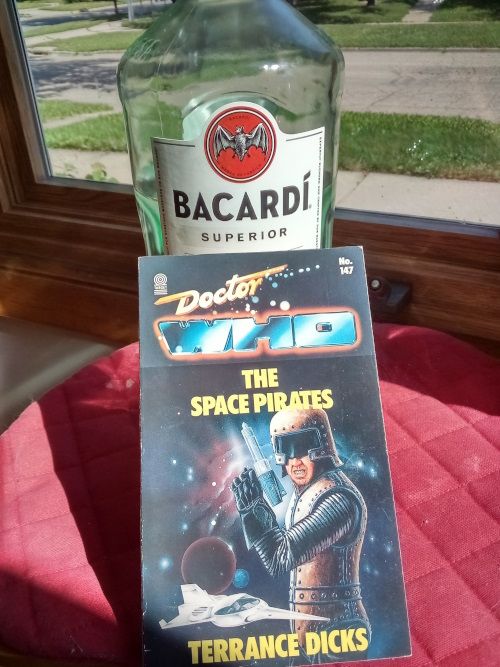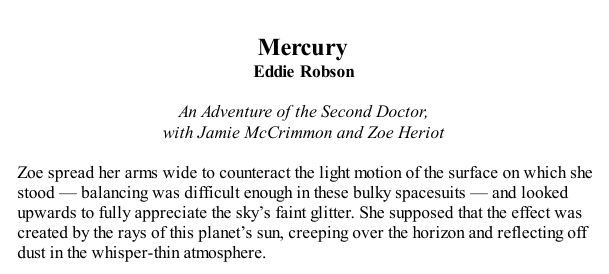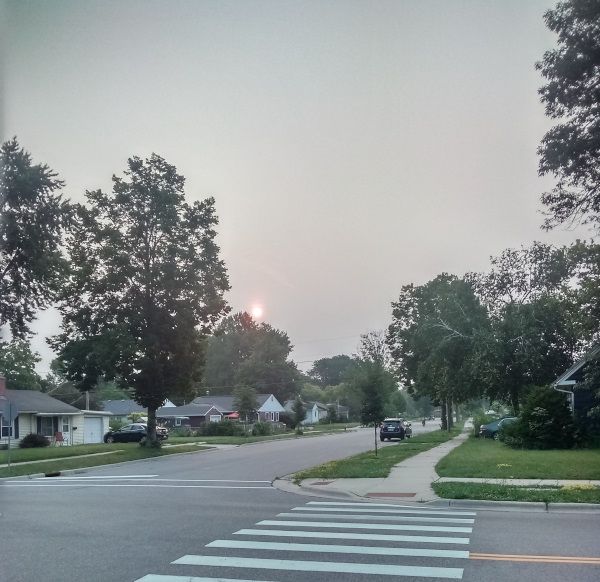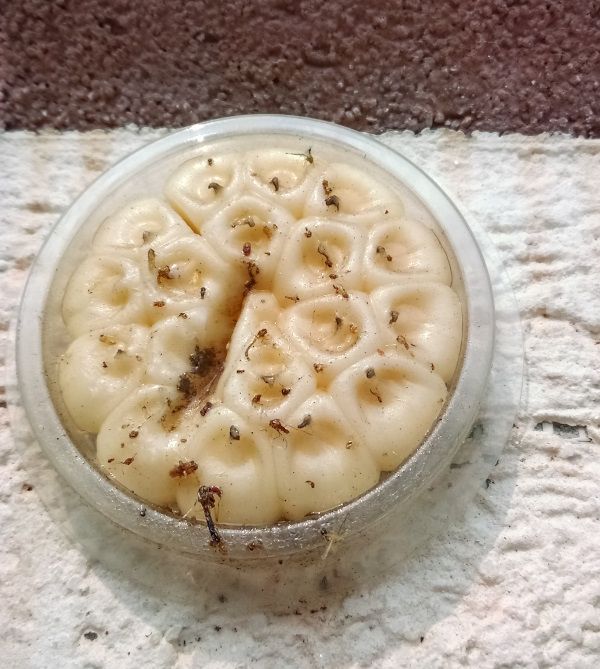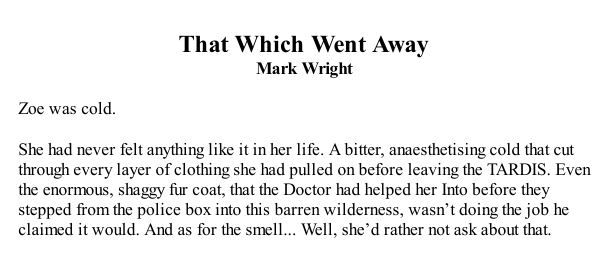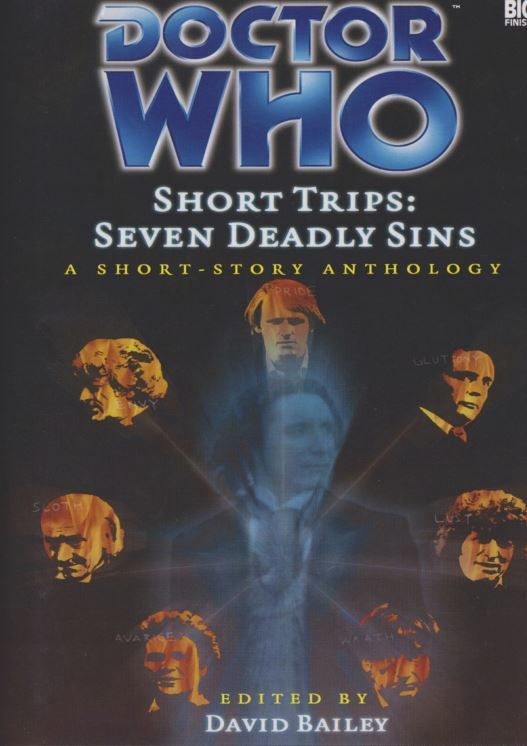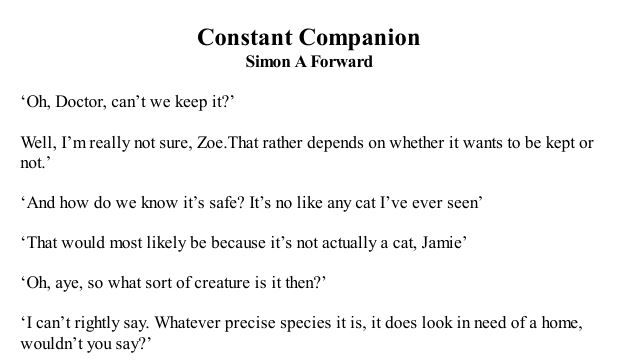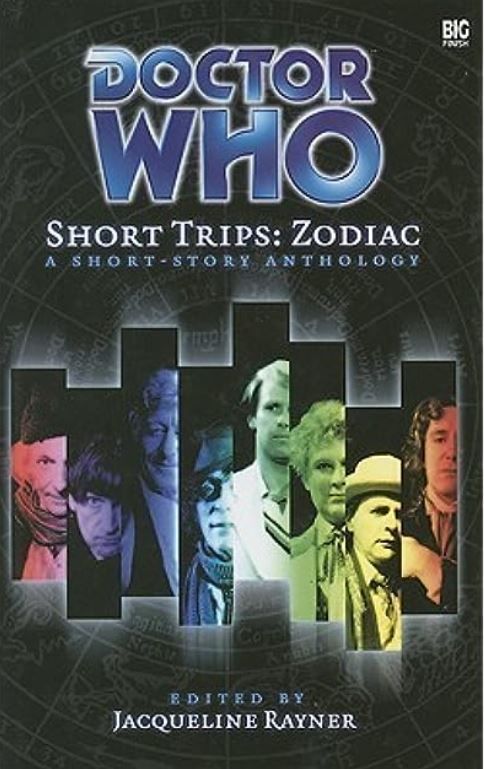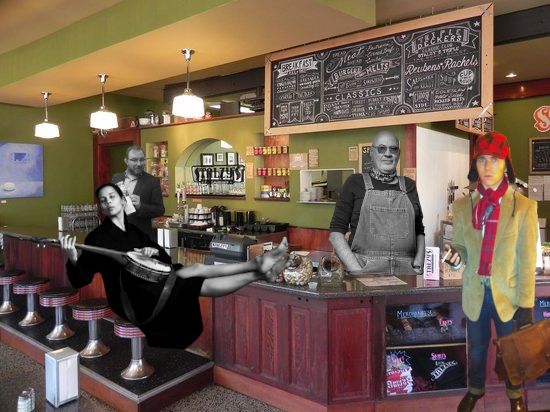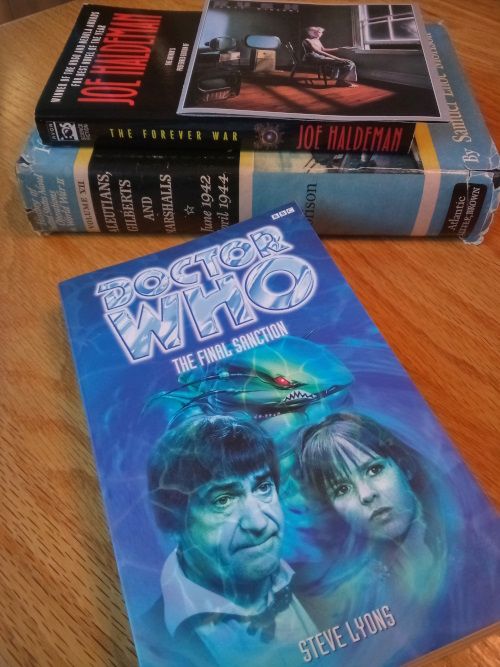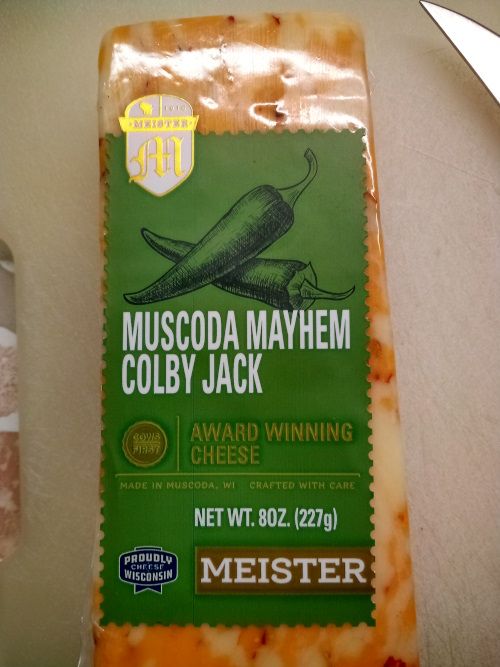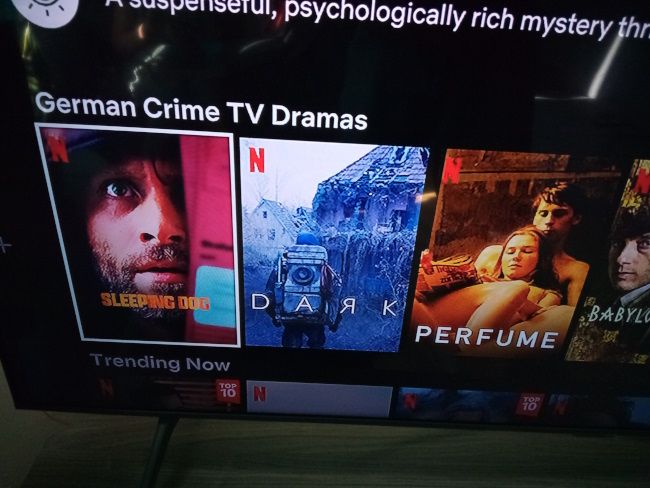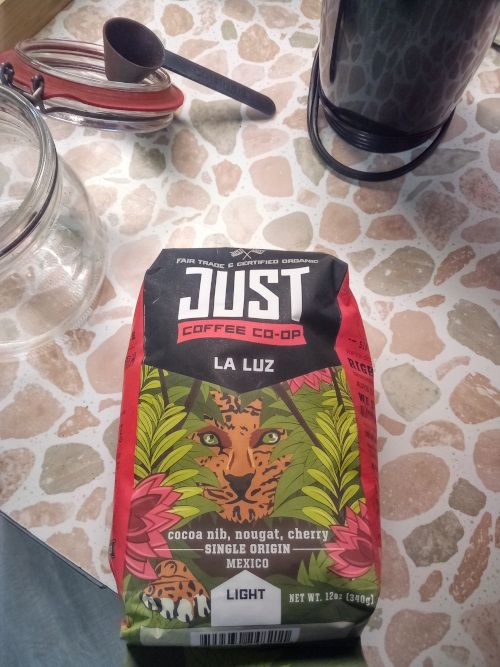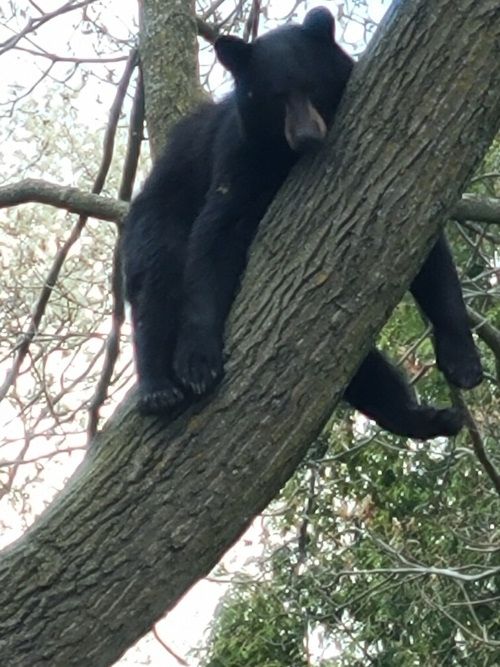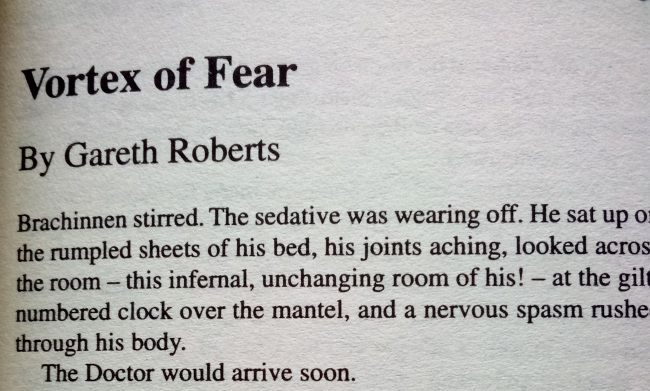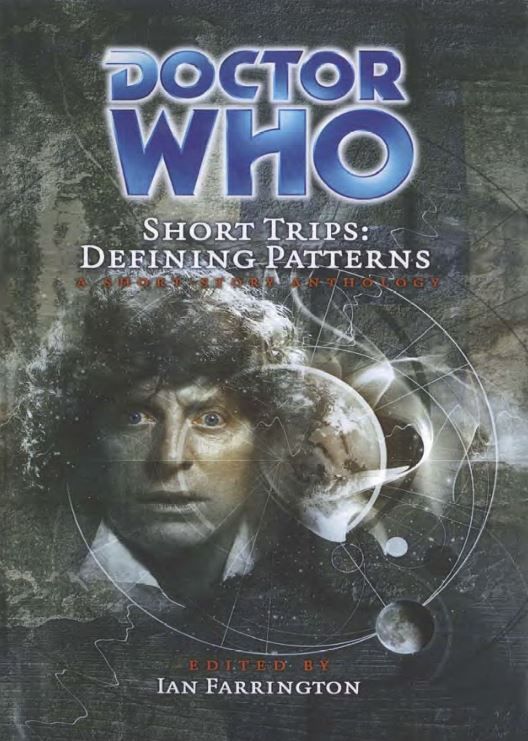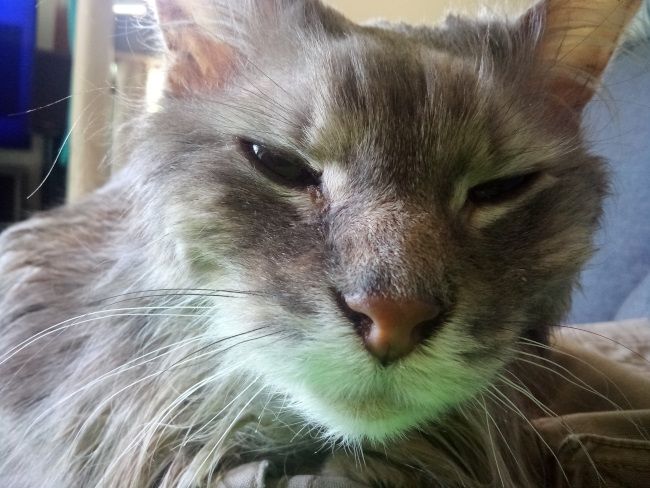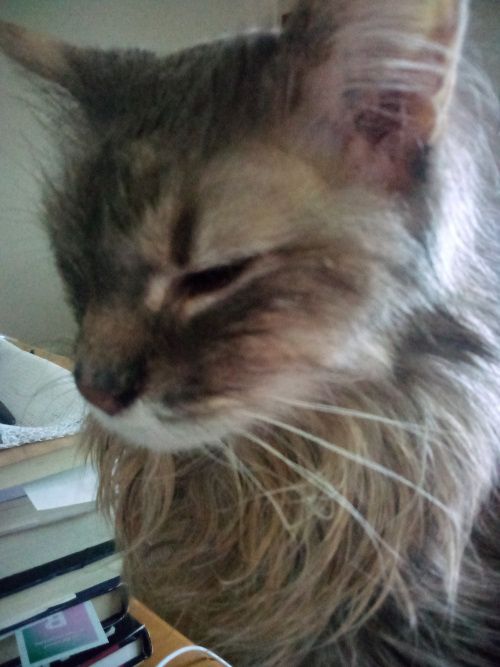Rhiannon Giddens has a new album due next month called You're the One and she released another song from it just yesterday. It's called "Yet To Be" and it features Jason Isbell.
28 July, 2023
R.I.P. Sinéad O'Connor
Sinéad O'Connor died a couple days ago and I felt badly when I heard the news. While not a fan of her music, she was of my generation. She was older than me, but not that much older. "Nothing Compares 2 U" hit the charts when I was in my late teens. Her music may not have been my cup of tea, but I watched her career unfold, to one degree or another, in real time. From "Nothing Compares 2 U" to ripping up that photography of the Pope on Saturday Night Live to duetting with Peter Gabriel. Then she dropped off my music radar only to reappear occasionally when she changed religion or said something weird that made for good copy.
Of the tributes to her, Morrissey commented:
"There is a certain music industry hatred for singers who don’t 'fit in' (this I know only too well)," he wrote, "and they are never praised until death – when, finally, they can’t answer back. The cruel playpen of fame gushes with praise for Sinead today … with the usual moronic labels of 'icon' and 'legend'. You praise her now ONLY because it is too late. You hadn’t the guts to support her when she was alive and she was looking for you."
I don't know if O'Connor ever played in Madison or Milwaukee but there are recordings out there of various Chicago gigs. Here's one from 11 April 1988 at the Cabaret Metro. I'm really diggin' "The Value Of Ignorance".
27 July, 2023
Pocket Full of Argonite
We have no limes!
The Space Pirates is another missing story. A six-parter and the penultimate TV story of Troughton's era on the show, only the second episode survives and the missing ones haven't been animated. Ergo I returned to my Target library for this one. It wasn't novelized until 1990, a few years after writer Robert Holmes had died, so Terrance Dicks had the honor of writing it up.
In order that interplanetary commerce remain free flowing and unhindered (or some such thing), beacons are placed in the blackness of space to help spaceship pilots navigate the space lanes. Or something like that. These beacons are made from a rare and precious mineral called argonite. They are also prefab and consist of 8 ready-made sections that are held together magnetically.
A group of space pirates, led by the lowdown, dirty, and mean Caven is going around and blowing up these beacons into their consituent sections and sending them back to their base to be processed and sold for a tidy profit. The Space Corp seeks to stop them. V-41, one of their flagships, patrols the space lanes and is commanded by General Nikolai Hermack.
Hermack learns that Beacon Alpha One had sent a distress call that suddenly stopped. Being a veteran of the Corps, his gut tells him that the beacon was a victim of piracy. So he stations small crews on some of the beacons in a bid to catch them in flagrante delicto.
The TARDIS lands on Beacon Alpha Four unbeknownst to the handful of Space Corp security officers stationed there. Caven and his men, including his right-hand one, Dervish (great name), enter the beacon and make short work of the Space Corp guys except for one named Lt. Sorba. They spare the Doctor, Zoe, and Jamie but seal them in a section of it. When the pirates blow the beacon into its parts, our heroes are left tumbling through space in one of them.
Fortunately, they are rescued by one Milo Clancey - what's with that name? - an old duffer (I think he's a sexagenarian) who still cruises around in a vintage ship from the days of his youth called the LIZ-79. The section of the beacon with the TARDIS continues on with the pirates.
I pictured Clancey as a combination of Monty Python's Mr. Neutron and Dastari from The Two Doctors with slicked back grey hair, though his personality was more like Zaphod Beeblebrox in that he was a bit full of himself but not evil.
Hermack suspects Clancey is behind all of the argonite piracy and pursues the LIZ-79 with the TARDIS crew still aboard. The veteran pilot decides to hide where the Space Corp would never think to look for him - a planet called Ta.
We learn that the pirates are in league with the CEO of the Issigri Mining Corporation, Madeleine Issigri, which is headquartered on Ta. Madeleine's father, Dom, was friends with Clancey but he has gone missing, presumed dead at the hands of his old pal by many.
Madeleine tells Caven to take a running jump when she discovers that her father is still alive, imprisoned in his old office. The pirate captain doesn't take this well and wires an atomic something or other to blow and take Ta with it. Now that it one ginormous chain reaction! Of course the Doctor saves the day by disarming the bomb mechanism. And Hermack is finally able to send Caven and company the missile he's been waiting to give them right up the jacksie.
The book is only 132 pages yet this was a six-parter. Did Dicks leave a lot out? Perhaps I am just miscalculating things.
While on Ta, Jamie shows some derring do and kills a few pirates allowing everyone else to flee. And he twists his ankle at one point but it mysteriously gets a lot better a bit too quickly. Zoe's math skills are put to good use when she calculates that the pieces of a broken beacon were on a trajectory for Ta. Beyond that, I don't recall her doing any other computing and, instead, she was relegated to running and pointing things out for the reader, in the main.
The Doctor here is basically what you'd expect. A little bumbling, some flashes of genius, handy with a sonic screwdriver. And he seems to really be able to hoof it when he needs to.
Clancey is like a space cowboy who seemed to be straight out of a comic book and I am looking forward to watching the lone extant episode to hear if he has an English accent or American. He'll say "laddie" and then turn around and utter "Tarnation, someone’s shooting at us!" Do Englishmen actually say "tarnation" or just Yosemite Sam?
Caven is a true scoundrel and a suitable pirate captain. Like any boss, he expects the impossible of his underlings and for them to accomplish it in record time. He's always threatening poor Dervish if he doesn't do something quicker than any human being has done before and, when Dervish protests, Caven threatens even more violence that's inherent in the system. Near the end, he moves to destroy Ta even if it means he dies too. If not for the Doctor, he'd have sent everyone to their doom.
I wonder what the pirates' outfits look like as I'm unsure if the guy on the cover is a pirate or an agent of the Space Corps. With that snarl, I assume he's a pirate but you never know with these things. It'd be cool if they had hi-tech peg legs or electric parrots or something fun and piratey.
All in all, I found The Space Pirates to be pretty bad. Granted, it's a fun little premise and the scene where our heroes find themselves trapped in a section of a beacon while the TARDIS is floating away in another was really neat. But there's so little dialogue of interest. Clancey chews the scenery well but, while Caven could do some fine mustache twirling, he mainly issues bland threats. The Space Corp folks, especially Hermack, sound so incredibly earnest that they come off almost as parody. It's as if the dialogue was ripped right from an English officer corp training film.
When people talk to one another, it feels like it's mostly threats and barking orders with some technobabble thrown in for good measure. Caven is too vile to engage in some badinage with Dervish whereas an older Holmes would have made them a fine double act. The Doctor, Jamie, and Zoe are usually too busy running and evading to do anything fun. Plus, I feel that our heroes got precious little time on the page. You've got the Space Corp, the pirates, Madeleine Issigri, Clancey - a lot of characters to deal with besides the TARDIS crew. I wonder if it was the same on the screen.
The story, at least as Dicks told it, was just rather clinical and lacked warmth. Clancey was a funny character but he stands alone here.
OK, I am off to check out what Tony Whitt and friends have to say about this book on the Doctor Who Target Book Club Podcast.
The giants are not what they seem
When the Doctor reveals that they are frolicking on the top of a research station on the planet Mercury, Jamie frustratingly intones, "Oh, don’t tell me we’ve run out of that stuff again." I smiled a big grin upon reading this.
The TARDIS has landed on a mobile research station that is a bit like the Snowpiercer. But different. Instead of a train racing headlong against the deep frost of a new Ice Age, what we have here is a domed research vessel called the Sunwatcher that creeps like a tortoise along Mercury's equator keeping it in the twilight zone, an area that straddles the blast furnace of the day side where not even the crew of Icarus II would dare go in one of those big suits and the extremely chilly night side which puts our polar vortices to shame. And instead of the last remnants of humanity engaged in a Hobbesian class war of all against all, the Sunwatcher has but a handful of people engaged in much more peaceful pursuits such as looking out for solar flares.
Our heroes' dilly-dallying is interrupted when the Sunwatcher starts to shudder. Then a hatch opens and a woman pops her spacesuited head up. I chuckled when I read that Jamie expected her to blame them for a recent mishap. "Thank God you’re here," the woman, named Alison, says before ushering them inside.
As it turns out, the Doctor, Jamie, and Zoe are not the help she had radioed for. There's a creature onboard and, while it's not killing the crew one by one, people whom it touches go semi-catatonic and say little more than, "Help against the giants." It is described as being silver with a featureless face and I immediately thought that it was a Raston Warrior Robot gone soft.
Alison had found this silver man essentially frozen stiff out on the dark side and brought him into Sunwatcher to be probed and studied. Well, it thawed out and started laying hands on the crew. People are locking themselves in rooms as the creature stalks the hallways. Another researcher, Chelo, feels the silver touch but reveals to us that the creatures - and there are more of them now out on the tracks in front of the Sunwatcher - are locals. They were checking out the track that the Sunwatcher rides on one day when they came upon three giants and were frightened.
The giants, it turns out, are these big solar pylons that extend panels to catch some rays and power the Sunwatcher. One of these locals, described as not being the brightest of the bunch, was apparently scared out of his wits and accidentally ran towards the dark side where he froze only to be picked up later by Alison.
The natives receive full assurance that the giants are harmless and thusly our heroes are free to go on their merry way.
This was a really fun little story. It has some spooky Alien vibes early on with a creature roaming the Sunwatcher and the crew running scared. But it becomes clear fairly quickly that the threat isn't so threatening as Robson flips the base under siege trope on its head. This is another one of those short trips that would benefit from being expanded into a novel but is also quite satisfying as an amuse-bouche as I plow through most of the Second Doctor in the written word.
Seen around town - 24 July 2023
I walked outside and started walking to the bus stop and noticed that the Canadian haze was back.
Some sights from running errands earlier this week:
I saw a bunch of these stuck to the outside of the Schoep's Ice Cream factory. They kinda look like molars. No clue what they are.
Schoep's had a warehouse door open and it smelled like an ice cream parlor in a 50' radius of it. I think I started salivating.
Blumen - July 2023
My Frau developed a green thumb this year and went out and bought a plethora of flowers. They make the deck look mighty pretty. Here are some wonderful photos of hers.
Werebears of Bergen
Whew! After some more lighthearted adventures which saw the TARDIS crew scrambling to break Martian camp as "Yakety Sax" played, taking on a cute, cat-like pet, and then showing some goodwill towards the folks of Los Angeles, "That Which Went Away" comes like something of a blow to the solar plexus as it is a return to the more serious and somber tones of the last couple of novels, The Indestructible Man and The Final Sanction, though not as apocalyptic as those lengthier stories.
My mind flashed back to Robert Egger's The Northman several times during this story which sees the TARDIS land in a foggy, fjord-less area of Scandinavia in circa the 8th century. A jolly stroll in the chill and fog turns into a nightmare as our heroes are confronted by a line of men who look like they arose from the pages of Beowulf.
The Doctor and Zoe take off while Jamie stands his ground and fights. The young Scotsman proves himself to be quite the swordsman and manages to take out a few of the warriors before the BBG, Vignor, appears and proves more than a match. Jamie suffers a blow from Vignor's sword and goes down. Meanwhile, a few of the warriors have caught up with the Time Lord and his companion. One sweeps Zoe off of her feet and throws her over his shoulder as his booty. Er, plunder.
Just in the nick of time, another band of warriors appears to save the day. Led by Bior, they chase the brigands away and bring our heroes back to their village where Jamie receives medical attention from their shaman, Hefn. Treatment goes well but recovery takes several days. During this time, the Doctor notices Bior, Hefn, and the warriors sneaking away from the village under cover of only the stars every night. His curiosity and Spidey sense get the better of him and he follows them on one of their nocturnal ventures. He discovers that the men are into lycanthropy and that Hefn leads a ceremony involving bearskins and a mysterious red substance that he daubs onto the men's faces which seems to abet the transformation from man into bear.
One day Bior takes Jamie on his nightly trek to the pit where the transmogrification happens under the guise of "finishing" his course of healing. Jamie transforms and joins the sleuth, I guess you'd say. The Doctor worries for his friend and confronts Bior and Hefn about this vile magic. He is told that is only used to protect the village.
Soon enough, Vignor leads a raid against it which leaves Bior's son, Einar, dead. The distraught father rejects the comfort of his wife, Aella, and instead allows himself to be consumed by hatred and a desire for revenge. It isn't long before he decides to lead an assault on Vignor's people and orders Hefn to once again transform him and his men into ursine warriors. Hefn refuses but Bior says that, if he disobeys, he'll kill Zoe and Aella. The shaman accedes and begins the process, including on Jamie. The Doctor intervenes so that the laddie remains human.
The werebears head to Vignor's village and loose their vengeance upon it, even helpless women and children. Bior and his giant claws rip Vignor to shreds in a berserker rage. When all is said and done, the warriors leave the village in ruins and return home. They all revert to human form - except Bior.
The author of this tale, Mark Wright, sounded familiar. When I looked him up, I was delighted and highly unsurprised to see that he was co-author of the great Big Finish story, Project: Twilight. That was a dark and violent tale just like this one and they share a gloomy, sepulchral feel even though their settings are miles and centuries apart.
Just as Project: Twilight stood out for its rather graphic depiction of death in the form of bodies exploding, "That Which Went Away" features some of the most graphic death scenes in all of Doctor Who literature. Just as Cassie was the tragic figure in Wright's Big Finish classic, it it Bior here. He loses his humanity to become an ursine killing machine, but even after the killing stops, he never returns to human form.
The TARDIS crew are rendered well here but quite differently from what we get onscreen. There's some playful banter at the beginning but it's chased away at the tip of a sword before long and it never returns. The Doctor is forced to compete with Bior as the primary father figure in Jamie's eyes. I viewed this through a Moorian lens with the Doctor providing the wisdom of the King while Bior could offer the excitement of the Warrior.
Jungian ramblings aside, this was a very good, very meaty tale. We never learn what the magic wielded by Hefn was but it didn't matter. Much more important was how it was wielded. There are some touching scenes with Einar and his father that stand in such great contrast to the bloodlust that follows. And the way that Bior rejects Aella after the boy's death was just heartbreaking. Some of the most intense Doctor Who around.
Peace in L.A. and
Ian Anderson once noted that the Christmas Spirit is not what you drink.
You are my companion more than you know
A story that all cat lovers can relate to.
The TARDIS lands on a mysterious planet that seems to have chased away winter but lets spring, summer, and autumn all happen at the same time. Upon opening the ship's doors, they find a feline-like creature sitting there, almost as if it was waiting for them. Zoe blurts out the traditional, "Oh, Doctor, can’t we keep it?"
They do and they name it Marmaduke because of its marmalade colored fur. The cuddly creature has the usual cat escapades like shredding all the cold weather clothing in the TARDIS wardrobe, using Jamie's bagpipes as a scratching toy, and opening roundels and ripping out the wires.
But the Doctor soon discovers another one of Marmaduke's behaviors: it broadcasts the thoughts of Jamie and Zoe into his head as it is telepathic. Hearing his companions' thoughts, especially just before they say them aloud, begins to drive the Doctor bonkers and he gets a little bit more than testy. And so it is agreed the cat-like creature has gotta go.
At first they attempt to drop it off on the planet where they found it but discover that it has mysteriously gone missing. And so they seek other options, including the Sisterhood of Karn, but each time the feline telepath returns to the TARDIS.
The Doctor then has a revelation. He can return the creature to its owner but he must land the TARDIS there at a different time than he tried previously. Doing so, he steps out onto the world and is greeted by an old woman. She admits that she is a telepath and created the lovable creature for companionship but that it just became all too much for her as she was forced to hear the thoughts of countless beings. So she used her powers to influence the Doctor and friends to abscond with her furry friend.
But she missed it and is glad the Doctor has returned the little bugger. Back in the TARDIS, the Time Lord sees marmalade out of the corner of his eye everywhere and realizes that now it is his turn to miss Marmaduke.
As someone who shares his home with two cats, the opening of this tale felt very familiar. You see a kitty who looks cute and lovable, has fur soft to the touch, and you bring it home. All seems well until it ignores the scratching post in front of it for your couch. Et cetera and so on. Cat owners know what I am talking about. I chuckled at the vision of Ohica pointing at the door as she gave Marmaduke the stink eye. While I hate to admit it, I smiled as the Doctor got more and more irritated with Jamie and Zoe while their thoughts flooded his mind.
A fun little story and one that all cat lovers can relate to.
26 July, 2023
Pulling up the stakes
As far as I can tell, "Please Shut the Gate" is Stephen Lock's sole contribution to Doctor Who and it is a rather short Short Trip.
The TARDIS lands on Mars in December of 1999. There are no Ice Warriors about and instead our heroes find a tent and the remains of a campsite. Upon seeing a pipe - his pipe - the Doctor recalls that he had brought Ben and Polly here to see the Martian sunrise back when he was William Hartnell. But, while they were roasting marshmallows, the lateral drift compensators kicked in and they had to scramble lest the TARDIS leave without them.
Jamie and Zoe hear what they think are the sounds of a bombardment but the Doctor knows that those are the sounds of Martian probes landing. He also realizes that his former campsite would be an awfully big anomaly for the Earth probes of the 20th century so he enlists his companions in a hasty attempt to disassemble the old bivouac before a probe lands nearby and starts taking photographs that would make a good recruitment tool for the Boy Scouts but pose an existential crisis for humanity.
They are mostly done when the probe crashes right on top of the TARDIS and falls to the Martian surface in a state of severe disrepair.
At a mere 8 pages or so, this is truly a short trip. While insubstantial, it's still a short burst of fun to picture the TARDIS crew scrambling out of their asses to break camp and trying to stuff everything in the ship before doing something to cover their footprints and making a quick getaway.
The Lager With the Rye: Make Rye Not War by Delta Beer Lab
If you really want to hear about it, the first thing you’ll probably want to know is where this beer was born, and what my lousy drive to the store was like, and how the brewers and Stalzy's came up with this beer, and all that Chris Drosner kind of crap, but I don’t feel like going into it, if you want to know the truth.
Stalzy's Deli & Bakery is about a mile from my house as the crow flies. They cure their own meats, ferment their own cabbage, and bake their own bread. It's one of the great comfort food joints of Madison for me, especially since Ella's closed, as their menu with corned beef sandwiches and matzo ball soup brings back warm childhood memories of restaurants in Chicago. Stalzy's has never advertised itself as a Jewish deli but they certainly make overtures to it with the aforementioned matzo ball soup, challah bread, and lox.
But instead of knish, kreplach, or kugel, we get the ubiquitous Wisconsin fish fry. Ooh! I do believe they make their own Russian dressing too. Good stuff and essential when you bring home some of their corned beef or pastrami to make your reubens at home.
Delta Beer Lab is a bit further afield. It reminds me of Stalzy's in that it doesn't seem to be a hip and trendy place. More stalwarty. There's no cachet in being seen eating a corned beef sandwich. Similarly, Delta is ensconced on the south side of Madison and the far side of the Beltline, a long way from all of those thirsty Epic employees on the isthmus. I've never heard anything bad about them but I've also never heard of their beers really making a big splash.
A friend brought some of their coffee brown ale on a camping trip a few years back and it was wonderful to sip it next to the fire. I've reviewed a couple of their brews here and give them a lot of credit for making an unfruited gose. They're no phonies, just not downtown trend makers either.
So these two joints got together somehow and someone came up with the brilliant idea of making a rye lager. I miss heading to Chicago in the fall and grabbing some Hoss from Great Divide, a rye Oktoberfest. Perhaps it's available again but I haven't seen it in years. I love rye and I love lagers. I love how they tend to emphasize the grain tastes instead of the Hawaiian Punch ones likes IPAs do these days.
I bought a 4-pack of Make Rye Not War on the same trip as the one I bought Donna's Pickle Beer which brought me perilously close to being able to mix up my own Pastrami on Rye beer that Pipeworks does. Or did.
My pour of Stalzy's Rye produced a nice head of off-white, loose foam. It lasted only a little while. The beer was clear and of a deep copper/amber color. There was a smattering of bubbles inside. Taking a whiff, I smelled the titular grain along with a faint bit of caramel. Also faint was a stone fruit smell. There was something like black pepper in there too.
My tongue was greeted by a very nice fizziness, comfortably nested midway between the extreme effervescence of a Berliner Weisse and the meek carbonation of an English Mild. The body was medium-lightish and had a distinct bready taste, which I would have been disappointed to not find considering this is a "collaboration" with a bakery. I put collaboration in quotation marks because I simply disbelieve the notion that anyone from Stalzy's did anything more on brewday beyond drink beer and watch the brewer ply his or her trade. The taste was rounded out with a prominent rye spiciness, a touch of that caramel, and black pepper.
On the finish, my tongue was left with a lingering rye taste that was joined by black pepper notes as the hops came in to clear the palate of grain flavors and make way for an ending of medium dryness and bitterness.
I'll admit going in that I was a bit anxious about this beer because I don't know that I've ever had a lager from Delta Beer Lab. Breweries that do 99% ales and then turn around and do a lager usually make something rather bad. Yeah, yeah, yeah. I know pilsners are trendy but they take more skill than just hopping the living fuck out them.
But Make Rye Not War turned out to be absolutely fantastic. The rye flavor was given pride of place and I simply loved loved loved! the sharp spicy grain taste. And the beer wasn't very sweet. A bit of caramel, yes, but more like bread. I just wanted to bust out in a Saint John's dance, I was so happy. The grainy goodness was complemented perfectly by that black pepper taste. It's a flavor that's present in one of my favorite brews, Eliot Ness from Great Lakes Brewing. I have always wondered how that flavor is brought about and just assume it's the hops and the way they're cooked. Perhaps you can get hops with a Noble taste to go from something herbal towards black pepper by putting it in the brew kettle at a specific time or some such thing.
Unlike more recent rye brews I've tried (see here and here), there doesn't appear to be any caraway in Make Rye Not War which I don't mind as I am an unseeded rye kind of guy. Sadly, I highly suspect this is a one-off and it'll never be brewed again. A real shame as it's a great brew. I'd kill (figuratively) for a smoked version of this. Throw in a little smoked malt and I think you'd have something very close to the Platonic ideal of beer.
Junk food pairing: I say keep the deli theme going with your Make Rye Not War by pairing it with a bag of dill pickle potato chips.
Now She Has Become Death, the Destroyer of Ockara
The Final Sanction begins with Zoe hearing an explosion. Things get worse and really don't let up for 284 pages.
The TARDIS lands on a planet and it isn't long before the crew find themselves in a minefield. The Doctor manages to get himself out of a tight squeeze with the sonic screwdriver after he realizes he's stepped on one and any quick moves would spell the end for him. Extricating themselves from that deadly scene in exchange for a stroll along the beach, they stumble upon an abattoir on the shore filled with the bodies of P.O.W.'s who had all been shot in the head. They are all clad in the same uniform and the Doctor realizes that the dead are Kalarians and that they've landed on the planet Kalaya. He knows all-too well the history of this conflict and wants nothing to do with it. But the horrors continue to be piled Pelion upon Ossa as the TARDIS trio are captured by soldiers wearing armor that makes them look like sharks - the Selachians, whom we met in The Murder Game.
The Selachians throw our heroes into their version of an armored personnel carrier to bring them back to their underwater base. But the Terran Security Forces ambush the APC convoy. The Doctor and Jamie are rescued by the humans but the Selachians get away with Zoe.
Back at the TSF base, commanded by one Wayne Redfern, the Doctor reveals the horrible fate of the conflict that they've been dropped in the middle of to Jamie: the humans will retake Kalaya and then push on to the Selachian homeworld, Ockara. The Selachians are too proud a people to surrender and so Redfern will drop a new and very experimental bomb, the G-bomb, on Ockara which will destroy the entire planet, including thousands of P.O.W.'s. This means they've got to rescue Zoe and get the hell out of Dodge.
This sounds a lot like the Pacific Theater of World War II. The TSF has a strategy of taking one planet at a time which is just like the island hopping that U.S. forces did as they made their way from Guadalcanal to the Solomon Islands to Iwo Jima with the end goal being Japan. Kalaya is the equivalent of Okinawa here - next stop is the homeland/homeworld. The Selachians refuse to surrender just as the Japanese did. And that new, experimental bomb is just the atomic bomb with a different letter preceding it.
At this point, each of our travelers gets their own storyline, more or less, as they are separated and experience the horrors of war from different vantage points.
Ever protective of Zoe, Jamie volunteers to go on a mission to the Selachian base with the TSF in the hope of a rescue. Lyons does a fine job making it an intense battle scene demonstrating the fierce determination of the Selachians and the great killing power of their shark-shaped battle suits. Zoe is not rescued and Jamie is injured in the attempt so we get our first example of the futility of war. Our brave Scotsman suffers some PTSD as well.
Zoe ends up being taken to Ockara and thrown into a prison camp deep beneath the waves. But it's not like Stalag 17 where she sits there throwing a ball against a wall. Think Camp O'Donnell - the destination of the Bataan Death March. She is brutally interrogated but later manages to escape with a fellow prisoner named John Paterson. They make it to the surface and an island. Zoe wanders off into the forest where she encounters an Ockaran. (They become Selachians when they have the lower portion of their bodies amputated so they can fit into the shark suits.) It seems peaceful but, worried that it would give their position away, Paterson beats the hapless creature to death in one of the more gruesome scenes in a book with no shortage of gruesome scenes.
At first, Redfern and the TSF are suspicious of the Doctor and Jamie and the latter volunteering for a mission helped put their military minds at ease. But, when the Doctor is caught trying to make his way to the Ockaran surface (in a bid to exchange himself for Zoe, unbeknownst to them), Redfern becomes even more suspicious than before and paranoid that the Time Lord is a Selachian agent. And so the Doctor is held on Redfern's flagship and spends a lot of time, against his better judgement, trying to convince Redfern to seek a peaceful solution. He also confronts the inventor of the new, highly deadly bomb, Professor Laura Mulholland, the J. Robert Oppenheimer of the story. The Doctor can tell she feels guilt over the awesome power she has given the TSF and he attempts to convince her that it should never be used.
Amidst all of this, there is a lot of fighting and death. Lyons really makes the combat sequences kinetic with lots of close calls. He takes his time to let the fighting unfold instead of trying to get it over and done with. And there are a lot of red shirts who die horribly and graphically.
We learn that the Ockarans suffered greatly under the boot of the humans. Their world was formerly a vacation spot and the aquatic natives were thought to be barely sentient and so they were hunted and slaughtered a bit like seals here on Earth. After the Ockarans became Selachians and donned their battle armor, they gave no quarter to the humans they encountered and mercilessly killed as they conquered planets to give themselves some cushion between them and their human foes.
Lyons perches us on both sides in the course of the book so we get to know all-too well the blood lust that each has. But they also have understandable motivations. The TSF simply sees that the Selachians are killing innocent people and this must be stopped while, for the Ockarans, humanity has brought them nothing but pain, suffering, and death which also must end. Lyons also deftly alternates between the scenes showing the grunts doing the fighting and those with the commanders behind the lines giving the foul orders.
The Final Sanction spares nothing in telling the reader that war is hell. Arguably, it's goes overboard as it begins with horror and carnage and the bodies just keep piling up but Lyons writes a compelling and thrilling tale. What really makes it interesting, for me, is the fact that the Doctor knows the history of the war. He knows that Redfern will have Mulholland activate the bomb (it's not just dropped but rather needs codes from both of them) and that Ockara will be obliterated. All life on it will be returned to star dust. This awful knowledge changes the Doctor and he actively seeks to alter the course of history.
He seeks small changes, at first, rationalizing them away as being insignificant; nothing that Time can't easily recover from. But he throws caution to the wind and moves on to bigger, more potent alterations of the time line.
The Doctor is not the jovial hobo we've come to know and love, playfully poking fun at Jamie and challenging Zoe's knowledge in a kind, avuncular way. He's as serious as a heart attack. He is racked with guilt over Zoe being held prisoner and the fact that she will die if Redfern has his way and does the unthinkable. Knowing history, the Doctor has this tremendous weight on shoulders that he can and must bear, but it brings some things out in him that are usually held in check.
On the other hand, his most noble virtues - loyalty to and concern for his companions as well as a desire for good to prevail (or, at least, not lose) run smack up against all non-interference principles. I believe he even notes that the destruction of Ockara is a fixed point in time, it's one of those events that simply must happen in order for time & space to remain in good stead. Yet the Doctor tempts Fate. It's a fascinating portrait of a Time Lord suffering from a severe case of cognitive dissonance.
If anyone reads this book and concludes that it's a bit too much, that Lyons seems to have a grim and persistent determination to bash his readers over the head with "war is hell!", I understand. But I really enjoyed this book, even if the scene where Redfern and his squad run across an Ockaran village and lay waste to it brought scenes from the Vietnam War to mind and absolutely broke my heart. He's a very tragic figure and I think the book did a nice job of giving some back story to make him a complicated character instead of a simple warmonger.
There were flourishes of Starship Troopers here, such as how the humans referred to the Selachians as "sharks" just like as Heinleins soldiers call their enemies "bugs". Plus I caught some The Forever War vibes as well. As noted above, I see many a World War II parallel in this story. With Christopher Nolan's Oppenheimer unleashed just recently, it came to mind during every scene with Mulholland.
This is a fine story with some really nice characterization. It is intense and somber but well-rounded. The Final Sanction puts paid to the notion that the PDAs are all simplistic and hokey and pale in comparison to the Virgin novels.
Chris & Matt from the All-New Doctor Who Book Club did an episode on this story and I am off to listen to it now.
I got tickets for Oppenheimer on 70mm
I now have tickets to see Oppenheimer at an IMAX on 70mm film. I'm really looking forward to this. No wonder I've been listening to this song a lot lately.
25 July, 2023
I think vegetables can be very good in beer, don’t you?: Donna's Pickle Beer by Pilot Project Brewing
What is the next smallest prefix after pico? That may be an accurate description of the trend that is pickle beers.
I tried one from Noon Whistle last autumn, which I rather liked, and have seen one from Destihl on shelves here in Madison, although I now see 2 versions on their webpage - the regular and the spicy. What is it with Illinois breweries and pickle beers? If I recall correctly, there were a few at the Great Taste of the Midwest last year but I didn't sample any such brews. I merely recall hearing tell of them on that den of iniquity that is Twitter.
On a recent venture out to Brennan's in search of new/fresh beer from Jack's Abby and anything by Dovetail that is not brewed year-round, I stumbled across Donna's Pickle Beer. (As near as I can tell, Jack's Abby has left the state and Dovetail only delivers non-annuals to select joints around town.) I believe that it is now easier to find a pickle beer in this town than it is a smoked beer. Surely this is one of the seven seals and it is now broken.
Donna's Pickle Beer is brewed by Pilot Project Brewing, a brewery that, I presume, provides space for others to come on in and brew. It apparently originated in Chicago but now also has an incubator in Milwaukee. Donna's is the brainchild of Scott Baird and Joshua Jancewicz and is named after Jancewicz's mother. Donna the beer is made with the "original brine recipe" of Donna the woman.
While there is definitely a high gimmickry factor at play here, Donna's stands out because it's an American lager and not a sour ale like the other pickle beers I've seen and tasted. In addition, dill pickles don't taste like tropical fruit so it gets points from me for that.
Why yes, I did garnish my pickle beer with a pickle. But I also did some tasting without a spear of flavor intensity. I wish I'd had slices so I could have perched them atop the rim. And, now that I think about it, I should have put a toothpick through the spear and rested it so that some of the pickle was visible above the head. Well, I guess I didn't want to block the garden gnome's face too much.
My pour produced a lovely, loose head of white foam that went away quickly. Reminded me of soda. The beer of pickle was exactly what you'd expect from an "American lager" which I now take to mean a Bud/Miller/Coors clone-like thingy: clear, yellow, and fizzy. You know what it smells like when you put your nose above a jar of pickles and take a sniff? This stuff smelled like that. I don't think that having the pickle spear in there changed the aroma very much. It made it bolder but not really different qualitatively.
The beer had a light body and - quelle surprise! - tasted like pickle brine. Enough saltiness to enhance the flavor but not enough to make it salty like a Dead Sea(TM) Gose. I couldn't discern the grain but I suspect it made the beer a bit fuller tasting than it would have been otherwise. I also couldn't taste anything really tangy. They didn't try to compensate for the vinegar's absence and left something just savory. The finish too was pickle briny. Maybe a trace of the Noble hops that the ad copy says are in there but just a trace of something spicy.
As with the aroma, having a pickle in the beer seemed merely to enhance what was already there and not change the flavor to something different. The unadulterated version of this stuff was light with a moderate dill pickle brine taste. It wasn't faint but it also wasn't like drinking out of a pickle jar either. Adding a spear just make it more briney, more pungent.
I thoroughly enjoyed Donna's Pickle Beer. Being mostly of German and Slavic stock, I am all over dill pickles. Without garnish, this beer is light and refreshing with enough pickle taste to let you know that it's there but not so much that you think you've been involved in an accident at the Vlasic factory.
Junk food pairing: Grab a six-pack of Donna's Pickle Beer and then a bag of Old Dutch Spicy Dill Pickle potato chips to drown in dilly gluttony.
24 July, 2023
M-M-M-Mayhem from Muscoda
I bought some cheese from Meister in Muscoda (that's mus-co-day) because it sounded spicy but not deadly and it had a cool alliterative name - Muscoda Mayhem. A very nice chili taste (jalapeno and serrano?) with a pleasant burn that will keep your tongue asking for more.
Some fine Netflix recommendations
I tuned into Netflix for the first time in a week or 2 and I got some fine recommendations first thing on my home screen.
I saw La Luz
I found a bag of this new roast/flavor from Just Coffee called La Luz. It's really tasty.
Not as sprightly and citrusy as a lot of Central and South American coffees. More on the earthy side. I am really enjoying it.
19 July, 2023
The Grand Redesign - Second Thoughts
A brief follow-up on my previous entries (here and here) about the new Madison Metro bus network.
In one of those posts, I noted that we now have automated announcements letting passengers know of connection opportunities. A good idea but I felt the execution was a bit ham-fisted. I noticed this week that these announcements have been changed.
They used to be like:
and so on with "route" being pronounced as "root".
Now the announcements go something like:
and so on with "route" being pronounced like "rout".
It's now a more concise announcement and, in my opinion, clearer because the word "route" isn't repeated. I hope it's helping. As for the pronunciation, I find that change to be really odd. I wonder what precipitated that.
Yesterday I stayed a little later at work than I normally do and missed my usual A bus. I've gotta say that it was really nice to have to wait only about 15 minutes for the next one instead of 30 or so minutes as I would have had to before the network redesign.
I mainly take the A and C buses and I feel like I did when I lived in Chicago. I can just show up at a stop (most of the time) and know that a bus will be along in fairly short order instead of worrying that I've got a 30-60 minute wait.
Frequency is freedom.
Lastly, I want to say that I am disappointed in the media coverage of the bus network changes. Prior to the implementation of the changes last month, articles seemed even-handed. Some will benefit, others won't. But now the articles I've read really focus on the latter group. I guess if an industry's motto is "If it bleeds, it leads", then I shouldn't be surprised that the squeaky wheels will get the column space.
The articles I've read have a token happy rider but give prominence to people who complain and go into their situations much more deeply. People do have legitimate complaints, to be sure, and they deserve to be heard. But it seems like the press will note, "Fred likes the changes, but Cheryl hates them and so let's go in-depth into the new burden she must bear with the new bus system." But I never hear about the great burden that was lifted off of Fred's shoulders.
My other gripe is that I don't see a lot being written about the groups whose transit travails were ostensibly the impetus for the new network. When it was being designed, I heard a lot about working class blacks and Hispanics on the south side who had 90 minute commutes with multiple transfers. Has the new system helped them? Their collective plight was the equity component to the redesign, to my recollection, but I never hear their reactions. Instead, I hear about UW Hospital workers who commute from points west.
I see that some minor tweaks are coming next month. It doesn't sound like the changes will take care of my biggest gripe, namely, that the westbound D bus doesn't get to North and E. Wash in more synchronized fashion with the A bus on weekdays. What would be really convenient and handy is denied me and the A doesn't start 15-minute headways until 7 o'clock while the D gets there just as the A would be leaving.
For my part, most of the routes I've used have to traverse a lot of road construction so I am waiting to find out how things go after construction season is over. BRT next year will surely change things again for me.
18 July, 2023
The Corona Diaries Vol. 90: Vernal Musings
(Listen to the prelude.)
(early May 2023)
We had some excitement at the end of last month when a black bear, fresh out of hibernation, moseyed into town on the southwest side, presumably in search of a picnic basket meal. It ended up relaxing in a tree near my father-in-law's house. Here’s a photo that my Frau's stepmother took as neighbors gathered to get a glimpse of the ursine visitor.
********
Earlier this month I took my first spring trek down to Acewood Park. It was a Friday so I was working from home. As soon as the whistle blew, I yelled "Yabba dabba doo!" and jumped on my bike and was off.
The water was not yet weed-choked and the foliage was still coming in. Overall, it was calm and peaceful. Well, until a couple of Canada geese landed near another pair. This led to a big fight across the pond that sent threatening honks echoing throughout the park.
You may recall that last year I wandered around the park during a spring snowstorm and came upon a mother goose sitting on her nest. I was curious to know if there was another nest full of eggs out on the little peninsula so I headed over.
No eggs this time. Had they hatched already? Was a happy anserine couple who were expecting yet to move in?
However, I did spy many birds this trip. For instance, here’s a cardinal. It was fairly close to me yet I only managed to get it nearly in focus.
As you might expect, there were robins everywhere. So of course I managed to get only one photograph in focus.
I wandered down the culvert to the cattails at the south end of the pond. On the way there, I pissed off some corvine friends as a murder of crows flew from a spot that they were presumably comfortable at to another one closer to the pond. They cawed in irritation all the while.
I also spotted many deer tracks such as these.
No poop, though. I reckoned they sleep in the cattails and then wander down the culvert in search of food.
As I was standing by the cattails, I heard the loud trill of a bird. It was moderately familiar and coming from the top of a nearby tree. I struggled to find the source of the song but, luckily, the bird just kept singing. Eventually I found the creature responsible: an American goldfinch way up high.
Was it doing a mating call? Sounding a warning klaxon that a pesky human was nearby, perhaps?
I made my way back up the culvert and was standing around listening to bird song and keeping my eyes peeled when I heard a woodpecker. Not only did I hear it, but I also saw it. And, not only did I hear and see it, but it actually flew towards me and landed on a tree not too far away. It was a red-bellied one. I think.
It poked around various tree limbs for a while but never pecked. After several minutes it flew off into the distance.
Ooh! I almost forgot. Geese.
********
The Frau and I took in some high culture this month with the Madison Symphony Orchestra’s season finale. The show featured Florence Price’s Symphony No. 3 in C minor and Carl Orff’s Carmina Burana.
Price was an African-American woman whom I first heard of a couple years ago in the wake of the Black Lives Matter movement's rise to prominence. We were told during the pre-performance lecture that she was rather well-known during her lifetime but eventually disappeared down the cultural memory hole. I figured her standing rose once again as the classical music world scrambled to diversify itself after the Summer of Racial Reckoning. However, I was wrong as Price was “rediscovered” back in 2009 when a cache of her scores and manuscripts were unearthed in an old house south of Chicago that was her summer getaway.
Although born in Arkansas, she practiced her art in the Windy City. She was the first African-American woman to have a work performed by a major orchestra when her First Symphony was played by the Chicago Symphony Orchestra at the 1933 World’s Fair in Chicago.
Maestro John DeMain took to the podium looking every inch the part with his angular features and black Nehru-looking jacket. For me, if you look up orchestra conductor in the dictionary, you get a picture of him. (Photos found at the MSO Facebook page.)
I rather liked Price’s piece. It was upbeat with great melodies and it incorporated African-American elements in a way that reminded me of Aaron Copeland’s use of American folk music. The third movement is called “Juba” after the African-American dance, a.k.a. – hambone.
After the intermission, DeMain returned to the stage which had swelled by dozens as the Madison Symphony Chorus joined the Symphony for Orff’s masterwork.
Whenever I hear the opening piece, “O Fortuna”, I picture scenes from the movie The Omen in my head. I can see the young Damien, spawn of Satan, doing his master’s bidding as his human "father", played by Gregory Peck, looks on in horror as the opening song of Orff's cantata evokes an infernal sense of menace. I just cannot help it.
While I thought that “O Fortuna” was used in the film, I apparently suffer from whatever you call the Mandela Effect for just one person as I can find no evidence that the song can be heard in it. The soundtrack was scored by Jerry Goldsmith and it has a piece called "Ave Satani" which bears more than a passing resemblance to "O Fortuna" so I suspect my mind just did a little switcheroo.
The lovely Jeni Hauser sang soprano in a red dress which was wholly appropriate as she performed pieces from the Court of Love section. She sang of a girl who “stood in a red tunic” and a glorious creature “redder than the rose”.
I adore Carmina Burana. It has great melodies and big, dramatic waves of choral goodness; songs about the caprices of Fortune and odes to drinking away one’s cares in a tavern; the laments of lonely women pining for a man and the songs of lustful young men.
The perfect piece for spring.
********
Bonus photo! No cats this time. Instead it’s Rodney Dangerfield on the UW's Bascom Hill here in Madison relaxing between takes during the shooting of Back to School in what I think is the fall of 1985.
The Time Wind-swept Gentry
It had been a while since I'd read a Virgin Decalog story and I was pleased to find that this one was written by Gareth Roberts. I really enjoyed his Virgin New Adventure, The Highest Science, as well as the 2 or 3 Missing Adventures with the Fourth Doctor of his that I've read. He has a good sense of humor and writes tricky tales, stories with some meat on their bones. Just good Doctor Who.
Here in "Vortex of Fear" Roberts plops the reader down in what I at first thought might be an old folks home. Then I hypothesized that we were, in fact, at an insane asylum or psychiatric hospital or whatever they're called now. It turns out, though, we are at a prison, of sorts, where the 1%ers of the planet Dephys 49 can spend a year instead of paying taxes. The joint is suspended in the time vortex and the communications equipment has mysteriously gone down.
When the Doctor, Zoe, and Jamie land there, they're mistaken for technicians who have come to fix the radio. While poking around they notice weird things like bodies disappearing and they find themselves enacting the same situations repeatedly. We learn that the prison/hotel/place they are in was sabotaged by an enemy of someone there and that the prisoners/residents have been exposed to the time winds of the Vortex. They are little more than ghosts now, fated to bicker with one another for all of eternity in this place.
At 35 or so pages, I wouldn't have minded at all if it were to be expanded to novel length. Indeed, I was reminded of the BBC Past Doctor Adventure Relative Dementias at the beginning. But I think it also works well as a short story. It was spooky and gave off The Ward/The Jacket kind of vibes without really descending into all out horror. Just weird and uncanny.
I thought it was funny that one of the characters, Kya, smokes. Then again, this is a mid-90s story. I love that she uses one of those super duchess filter extenders so she looks aristocratic as she fails to keep the smoke at arm's length. Great stuff.
17 July, 2023
Butterflies in Effect
"Iolas Blue" is a rather neat name. The Iolas Blue in this story is a bit like Hari Seldon in that he has come up with a device, the accurately but boringly named Predicticon, that is able to predict the future. But instead of using it to find out when humanity will run into trouble and attempt to ameliorate it, Blue looked into the future to find out that what stood in the way of his megalomaniacal desire to rule the universe and discovered that it was the Doctor.
And so he plots a scheme to lure the Doctor and his companions (Zoe and Jamie) into his clutches so that he can dispose of them and thusly rule the universe unimpeded. The Predicticon comes up with a detailed schedule for this scheme which has 100+ steps including Jamie slipping on a puddle of oil and getting mild bruises as well as the Doctor reading out line 109 which reads "The Doctor reads out item 109."
Blue boasts about the Predicticon's power and illustrates it with the tale of Daniel Barnes, a rich and famous racecar driver today, and Blue's nemesis in school who bullied him. Blue transmats a futuristic thumb drive full of music to a woman and also takes a sandwich that has mayo infected with salmonella and transmats it to a deli. (Two more feet and I can fit it in the frig!) A customer eats it and becomes sick. He goes home and this prevents his wife from having a tryst with their neighbor. Had they schtupped, they would have had a son who would have gone on to be a renowned city planner. The planner would have devised an accident prevention system which would have saved the life of a fellow who was good at negotiating peace treaties.
Instead a war broke out between two races which destroys a planet that is split into several large pieces. The woman who got the thumb drive full of music cranked up the tunes which, in turn, kept her neighbor up all night. This fellow is tired at work the next day and makes many mistakes. One result is that an important guy in planetary defense is not at work when one of those pieces of that broken planet comes hurtling towards Daniel Barnes whose car is hit by the meteorite. R.I.P.
Whew!
No matter what the Doctor and his companions do, they cannot escape because the Predicticon has anticipated their every move. When the time comes for the TARDIS crew to meet their demise, nothing happens. The Predicticon admits that it has fooled Blue because he is rude, bitter, holds grudges, and is a murderer. Our heroes escape while Blue is left alone knowing only that he will die during a natural disaster.
A very fun little story! Blue is a comically evil pyschohistorian and I chuckled at his butterfly effect Rube Goldberg scheme.
16 July, 2023
This guy has an 18 dexterity
I like this sign for our local outpost of Dagu Rice Noodle which is apparently a genuine chain restaurant from China. The guy is adroitly dodging those flying tomatoes like a boss. Kinda of reminds me of the Tormato album cover.
From the days of yore
A friend came over today and we took down our old microwave oven which I suspect to be just a bit younger than me. The wallpaper underneath the mounting plate looked to be original to the house and was likely quite trendy when my parents were growing up. Goes well with all the asbestos tile and flooring perfectly.
